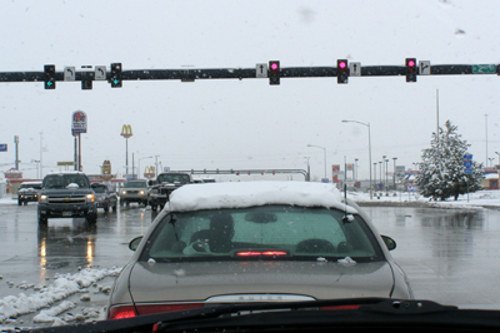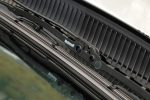Until you’re driving in inclement weather, it’s easy to forget about replacing your windshield wiper blades. In fact, windshield wiper maintenance is one of the most neglected tasks involved with car ownership today. But bad weather is hazardous enough without delaying your reaction time because you can’t see the road or obstructions, so don’t let yourself fall into this trap!

You should inspect your wiper blades whenever the seasons change and replace them at least once a year, regardless of how often you use them.
- Fall is usually the best time to change them, so you’ll have fresh blades to battle fall thunderstorms and winter’s harsh weather.
- In some climates, replacing your blades in the spring may be necessary as well, especially where there’s a lot of dust or rain.
- Most importantly, change your blades when you notice a decline in their performance quality, and pay attention when you are using your windshield wipers throughout the year so their deterioration won’t come as a surprise.
Learn why your wiper blades fail and how to test your current blades below.
What causes my windshield wipers to deteriorate?
Heat and UV rays are tough on rubber blades even when you’re not using them. They cause the rubber to harden and set, so the blades won’t adjust to the curve of your windshield when they’re in use. This can cause streaking and skipping, which is not just annoying but also unsafe.
Cold weather can cause blades to streak and skip as well, as the rubber becomes brittle and the holder may become clogged with ice or snow and unable to distribute tension properly across the blade.
Even without extreme temperatures, dust, road debris and bug guts will dull the edge of your blades. While this may take longer to cause a skipping or streaking effect, it results in water and debris staying on your windshield and interfering with your ability to see the road when it’s raining.
How can I inspect my windshield wipers myself?
One simple test you can perform, far preferable to simply waiting for inclement weather and then going for a drive, is to turn you windshield washers on. Once the windshield is wet, if you observe skipping or streaking, it’s likely time to change your windshield wipers.
An added bonus to this test is that you can also make sure your windshield washers are in good working order at the same time! Of course, if your washers don’t work, or if you don’t have them (for instance, in the case of a rear windshield wiper), you can just use a spray bottle instead. Be sure your windshield and your wiper blades are clean though, as unwanted dirt can also cause wipers to streak.
Another thing to test is tension in the wiper arm. A simple test for this is to try pulling the blade away from the windshield. If it offers little or no resistance, it’s time for new wipers.
The final step in your seasonal test should be a visual inspection of the blades. Cracks in the rubber, the blade starting to separate from the body of the windshield wiper or the blade beginning to bend or buckle are all signs that the rubber is deteriorating.
It’s easy to replace your wipers yourself, and lots of people do. There are some things you should know to look for when choosing replacement wiper blades as well, having to do with type of blade material, tension dispersion and aerodynamics among other things. But that’s a topic for another day. For now, just remember: check your wipers when the seasons change, and change them every fall or whenever you can see that you need to.




